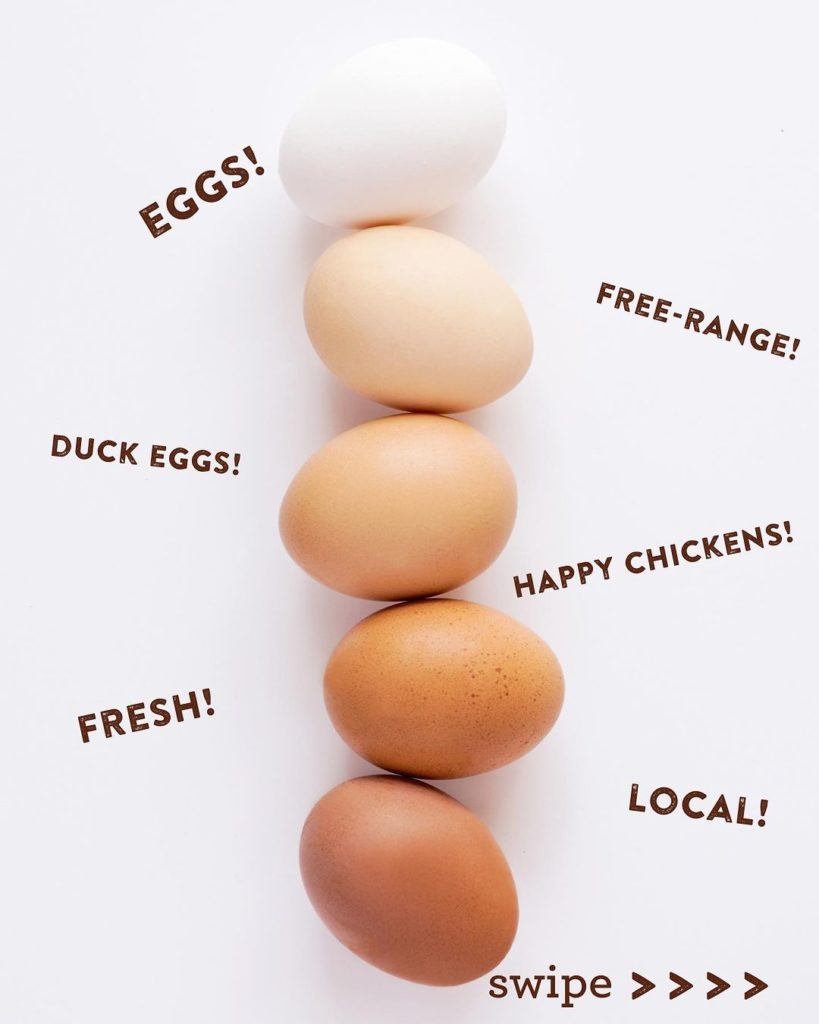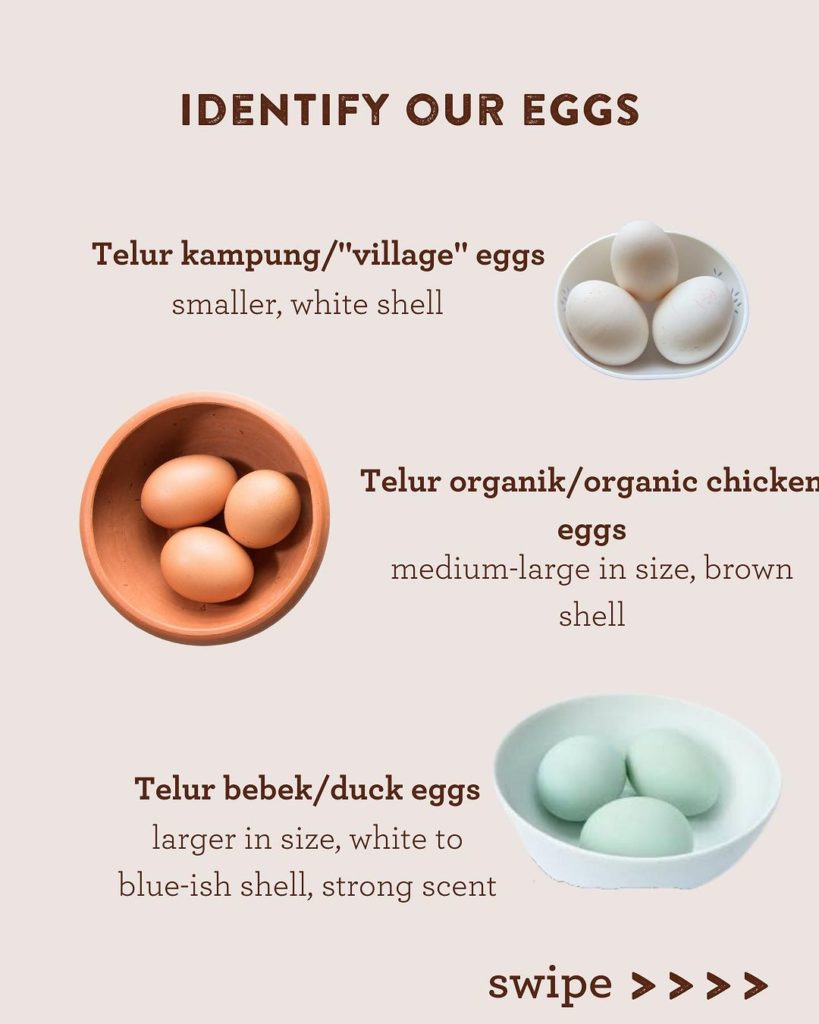Blog
Eggs: Unscrambling the Types, Nutrition and Environmental Impacts.
The average volume per person in the Eggs market, in Indonesia, is expected to amount to 6.6kg in 2024! And the Indonesian production is projected to grow by 15.14% (2024-2028) resulting in a market volume of US$150.00m in 2028!
But deciphering the world of egg buying is no easy feat, right? I mean, free-range, pasture-raised, cage-free, organic – what do these labels even mean? It’s like trying to crack a secret code. And let’s not forget about the chickens – how were they raised, and what did they munch on before laying those eggs you’re eyeing at the store?
But we are here to help! In this blog, we’re tackling these egg-related mysteries head-on. From the different egg types to the nitty-gritty of farming methods, we’ll answer all those burning questions you have about the seemingly humble but surprisingly complex world of eggs.
Bali Buda’s Commitment
Today, Bali Buda is excited to announce our formal commitment to sourcing 100% of our eggs from cage- free, organically-fed sources by the end of 2025. This initiative applies to all of our cafes, stores, and products. We are not just setting a goal; we are actively working hand in hand with our farmers to achieve this.
Together, we are implementing practices that ensure the humane treatment of hens and promote sustainable, organic farming methods. Our cage-free egg policy reflects our dedication to transparency and ethical standards.
Bali Buda is committed to regularly publishing our progress, demonstrating our journey towards an even more sustainable and health- conscious future.
Follow this link to know more about what we fight for: Act For Farmed Animals
Types of Eggs on the Indonesian Market
Chicken Eggs (Telur Ayam): The undisputed champions of Indonesian breakfast tables that come in various sizes.
Duck Eggs (Telur Bebek): Slightly larger and richer in flavor than chicken eggs, duck eggs are a popular alternative. They add a unique taste to traditional dishes like salted duck egg fried rice.
Quail Eggs (Telur Puyuh): Tiny but mighty, quail eggs are a favorite in Indonesian cuisine. Often used as a topping for salads or as a snack, these little eggs pack a protein punch.
Brown or White Shell?
Pigmentation
Nutritional Content
Shell Thickness
Cost and Market Perception
Taste and Culinary Use
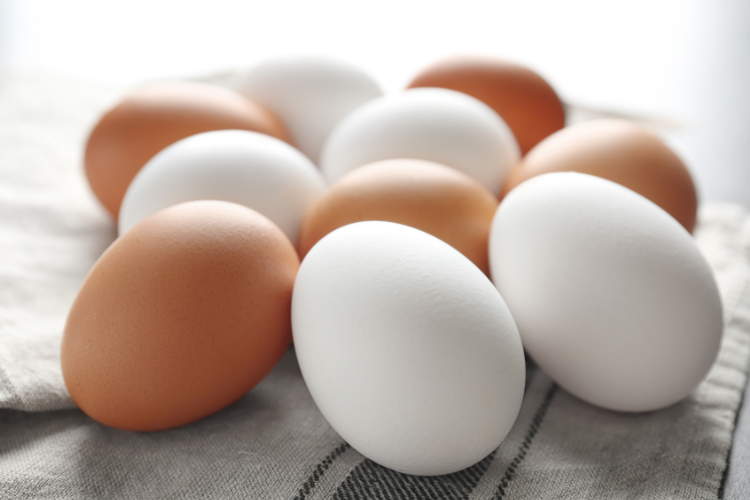
Health Benefits
Eggs are a powerhouse of nutrition, and the ones in the Indonesian market are no exception. Here’s a quick rundown. Pasture-raised & free-range eggs.
1. Protein Packed
Whether you go for chicken, duck, or quail eggs, you’re getting a good dose of high-quality protein, essential for muscle development and repair.
2. Rich in Vitamins
Eggs are a fantastic source of various vitamins, including B12, riboflavin, and folate, contributing to energy production and overall well-being.
3. Healthy Fats
Don’t fear the yolk! It’s where you find healthy fats, including omega-3 fatty acids, which are great for heart health.
4. Minerals Galore
Eggs are loaded with minerals like iron, zinc, and selenium, crucial for various bodily functions.
HOW TO CHECK YOUR EGGS’ FRESHNESS?
Simple easy way to find out!
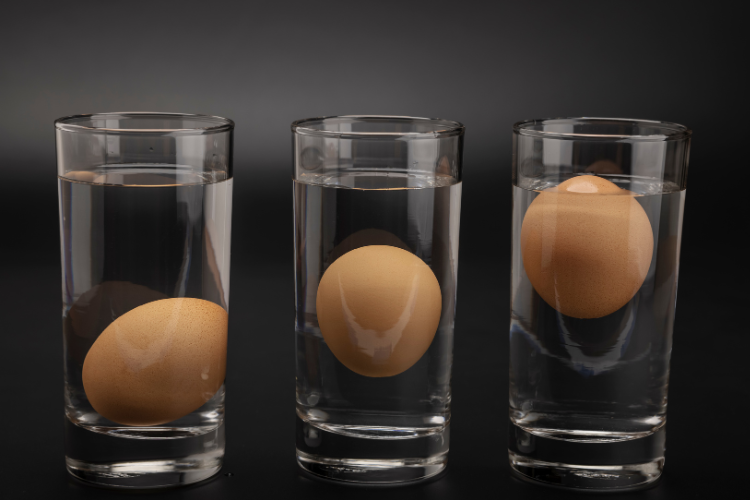
- Fresh Egg (Lies Flat at the Bottom): If the egg lies flat at the bottom of the bowl horizontally, it is very fresh.
- Slightly Older Egg (Stands Upright at the Bottom): If the egg stands upright on the bottom but doesn’t float to the top, it’s still good to eat but not as fresh. As eggs age, the egg white shrinks, causing the egg to stand up.
- Old Egg (Floats to the Top): If the egg floats to the top, it’s an indication that it’s no longer fresh. As eggs age, the air cell inside the egg enlarges, causing it to become buoyant.
- Very Fresh (Lies Flat): Excellent for raw or lightly cooked dishes.
- Still Good (Stands Upright): Suitable for cooking, but may not be as ideal for dishes where the appearance of the egg is crucial.
- Not Fresh (Floats to the Top): Use caution and consider discarding, especially if the egg has been stored for an extended period.
Different Types of Farming: Why Does It Matter?
When it comes to eggs, the tricky part is not just about choosing between brown or white. The methods behind egg farming vary widely, from conventional cages to free-range pastures, each leaving its mark on the health of the birds, the quality of the eggs, and the well-being of our planet.
Let’s delve into the diverse farming methods, examining their impacts on chicken health, egg quality, and the environment. Pasture-raised & free-range eggs.
1. Conventional Cage Farming
Farming Method: Chickens are kept in small cages, often in large indoor facilities. These cages are designed for maximum egg production efficiency.
Health Impact: Chickens in conventional cages have limited space to move, which can lead to stress, discomfort, and health issues. The close quarters may also facilitate the spread of diseases.
Environmental Impact: Conventional cage farming generates concentrated waste, contributing to air and water pollution. The large-scale operations may also involve resource-intensive practices and potentially contribute to deforestation for feed production.
2. Cage-Free Farming
Farming Method: Chickens are not confined to cages but are kept indoors. They have more space to move compared to conventional cage systems.
Health Impact: While chickens in cage-free systems have more space, health concerns persist, and the lack of outdoor access can affect their well-being. Cage-free systems may reduce stress compared to conventional cages.
Environmental Impact: Cage-free farming generally has a lower environmental impact than conventional cages, but indoor farming requires energy for lighting and ventilation.
3. Free-Range Farming
Farming Method: Chickens have access to outdoor areas in addition to indoor shelter. This allows them to engage in natural behaviors like scratching and foraging.
Health Impact: Free-range systems generally lead to healthier and more active birds. They can exhibit natural behaviors, and exposure to sunlight may enhance the quality of their eggs.
Environmental Impact: While free-range systems may require more land, they often promote more sustainable land use. The rotation of pasture areas can help maintain soil health, and the birds contribute to natural pest control.
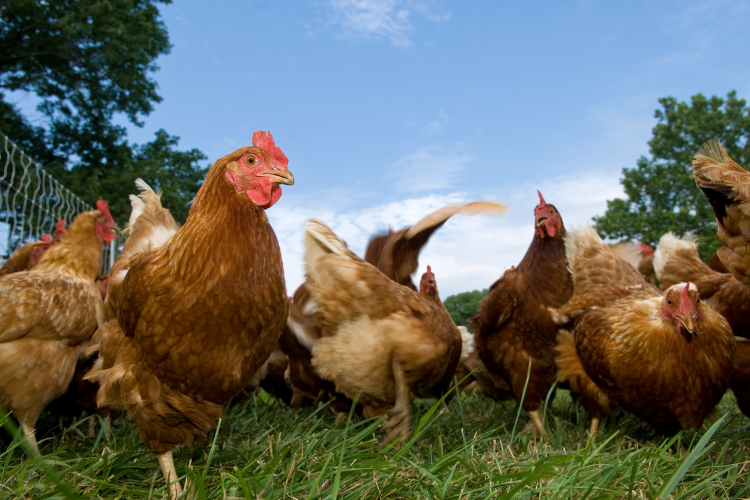
4. Pasture-Raised Farming
Farming Method: Chickens are given extensive access to outdoor pasture, allowing them to graze on grass and insects. Indoor shelter is provided for safety.
Health Impact: Pasture-raised systems contribute to the overall health and well-being of chickens. They have a more varied diet, resulting in eggs with a richer nutritional profile.
Environmental Impact: Pasture-raised farming promotes sustainable land use, and the rotation of pasture areas helps maintain soil health. The birds’ foraging behavior contributes to natural pest control. Pasture-raised & free-range eggs.
5. Organic Farming
Farming Method: Chickens are raised following organic standards. They have access to the outdoors, and their feed is organic and free from synthetic pesticides and antibiotics.
Health Impact: Organic farming provides a healthier environment for chickens by avoiding synthetic chemicals in their feed. The eggs may have lower levels of chemical residues.
Environmental Impact: Organic farming promotes soil health, avoids synthetic chemicals, and encourages biodiversity. It often involves sustainable practices, contributing to a more environmentally friendly approach.
Eggs Can You Find at Bali Buda
At Bali Buda, you can find 3 types of eggs:
Free-range and organic (brown) chicken eggs, free-range duck eggs and (white shell) telur Kampung (meaning “eggs from the village”, where they roam freely).
All our eggs are also available from our cafés menu, check is out here.
Takeaway
When choosing eggs for optimal health, prioritize options from ethical and sustainable farming methods like free-range, pasture-raised, or organic. These choices not only promote the well-being of chickens but also have lower environmental impacts. Consider freshness using the float test as a quick guide, with very fresh eggs lying flat at the bottom. Ultimately, making informed choices aligning with personal values contributes to a healthier and more sustainable approach to egg consumption.
Pasture-raised & free-range eggs.

 Indonesia
Indonesia

